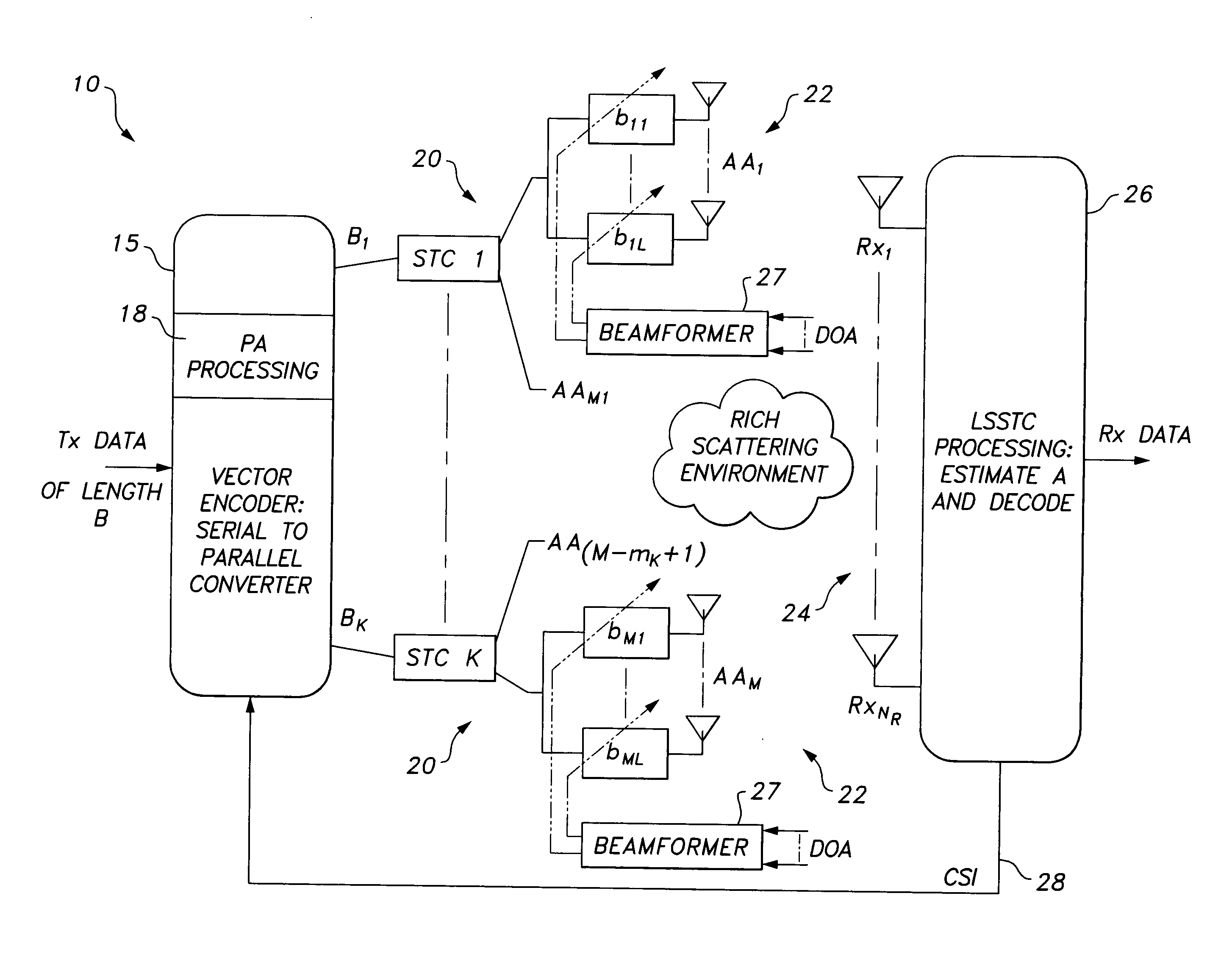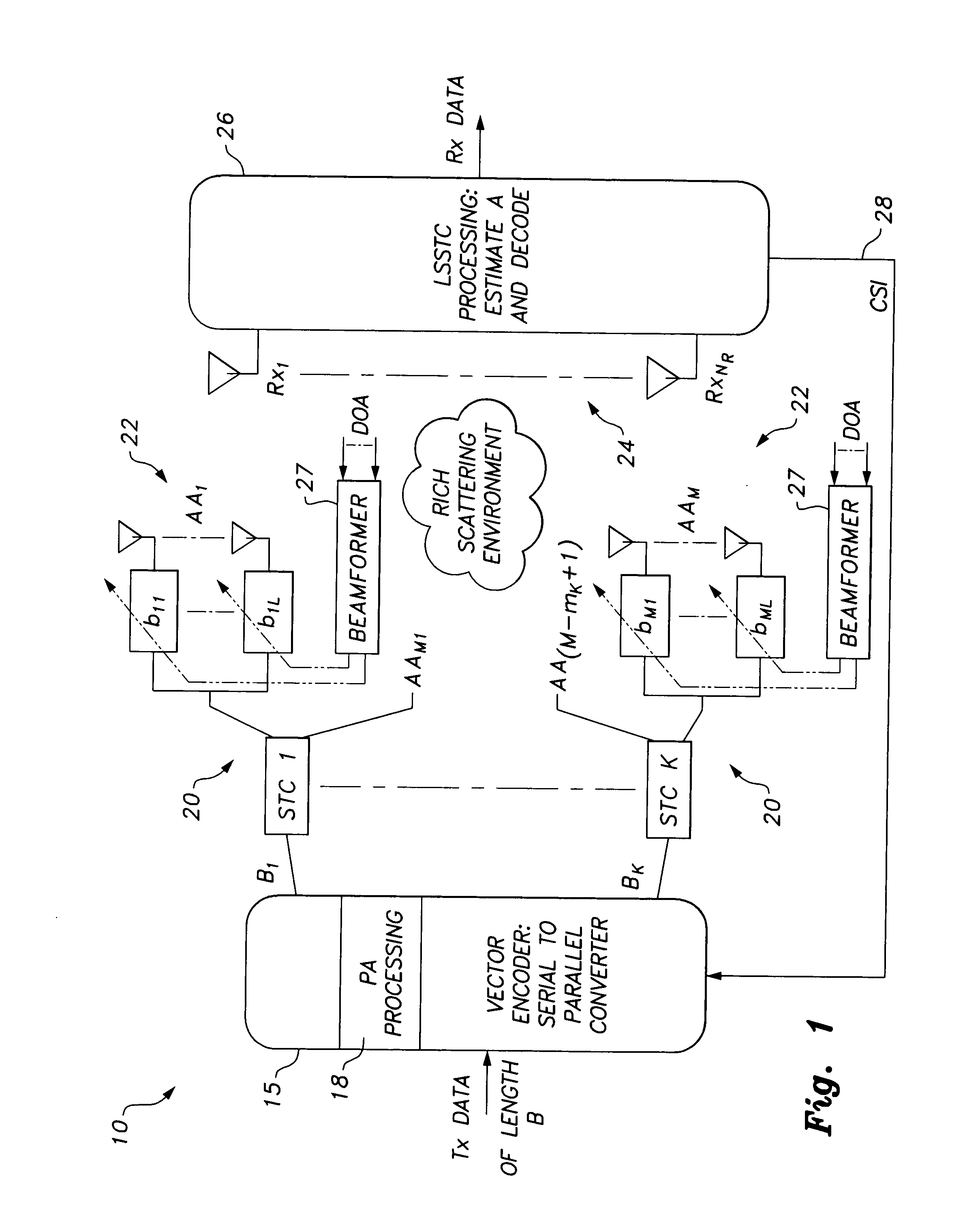Optimal power allocation method for an LSSTC wireless transmission system
a wireless transmission system and optimal technology, applied in transmission, modulated carrier systems, power management, etc., can solve the problems of poor energy performance of v-blast, poor efficiency of power allocation, and inability to fully exploit the diversity of available diversity, so as to improve error performan
- Summary
- Abstract
- Description
- Claims
- Application Information
AI Technical Summary
Benefits of technology
Problems solved by technology
Method used
Image
Examples
Embodiment Construction
[0014]The optimal power allocation method for an LSSTC wireless transmission system utilizes Layered Steered Space-Time Codes (LSSTC), a recently proposed multiple-input multiple-output (MIMO) system that combines the benefits of vertical Bell Labs space-time (V-BLAST) scheme, space-time block codes (STBC), and beamforming. A new downlink scheme employs LSSTC with optimal power allocation based on the assumption that the user feeds the base station (BS) with the average single-to-noise ratio (SNR) per V-BLAST layer through the uplink feedback channel. Such a system enhances the error performance by assigning power to the layers in an optimum manner. The method provides an optimum power allocation LSSTC (OPA-LSSTC). The technique has been proven to be superior to existing LSSTC systems without power allocation.
[0015]FIG. 1 shows the block diagram of an exemplary LSSTC system 10 capable of implementing the optimal power allocation method. The system 10 has NT total transmitting antenn...
PUM
 Login to View More
Login to View More Abstract
Description
Claims
Application Information
 Login to View More
Login to View More - R&D
- Intellectual Property
- Life Sciences
- Materials
- Tech Scout
- Unparalleled Data Quality
- Higher Quality Content
- 60% Fewer Hallucinations
Browse by: Latest US Patents, China's latest patents, Technical Efficacy Thesaurus, Application Domain, Technology Topic, Popular Technical Reports.
© 2025 PatSnap. All rights reserved.Legal|Privacy policy|Modern Slavery Act Transparency Statement|Sitemap|About US| Contact US: help@patsnap.com



